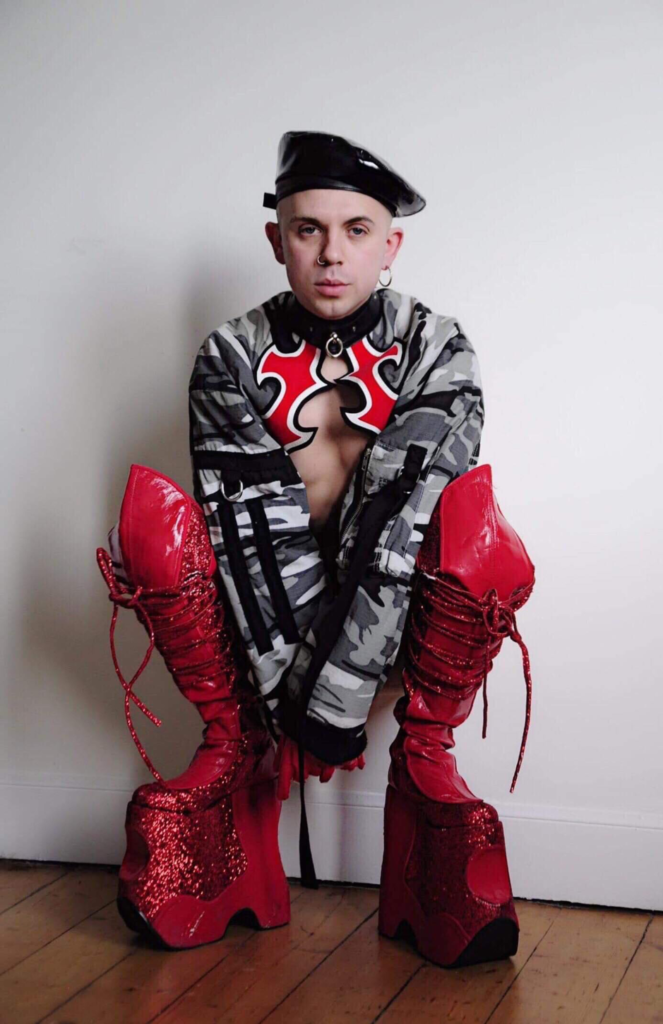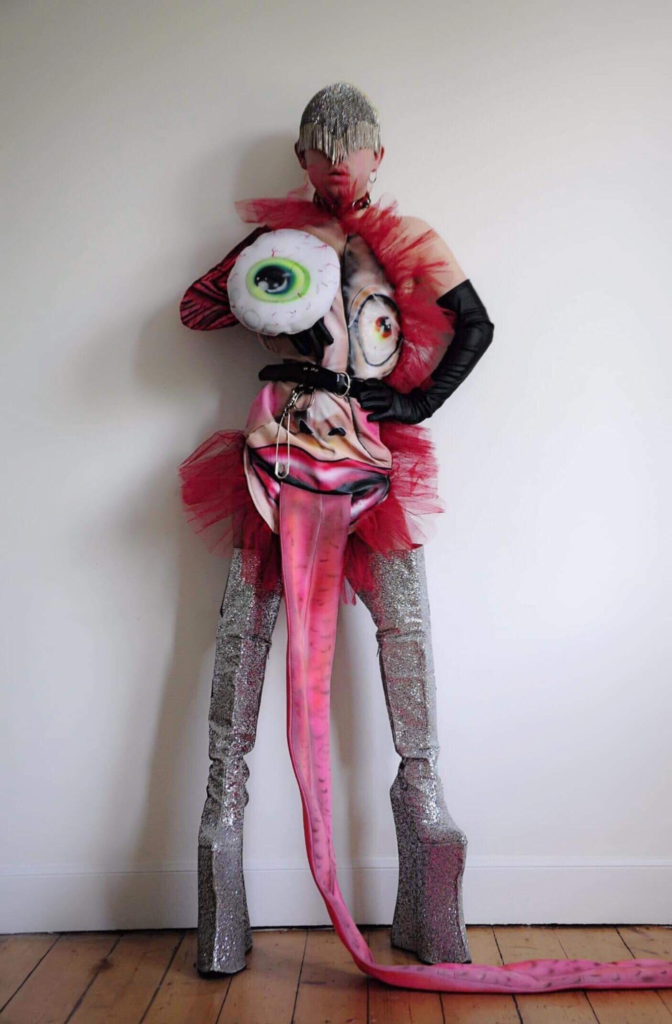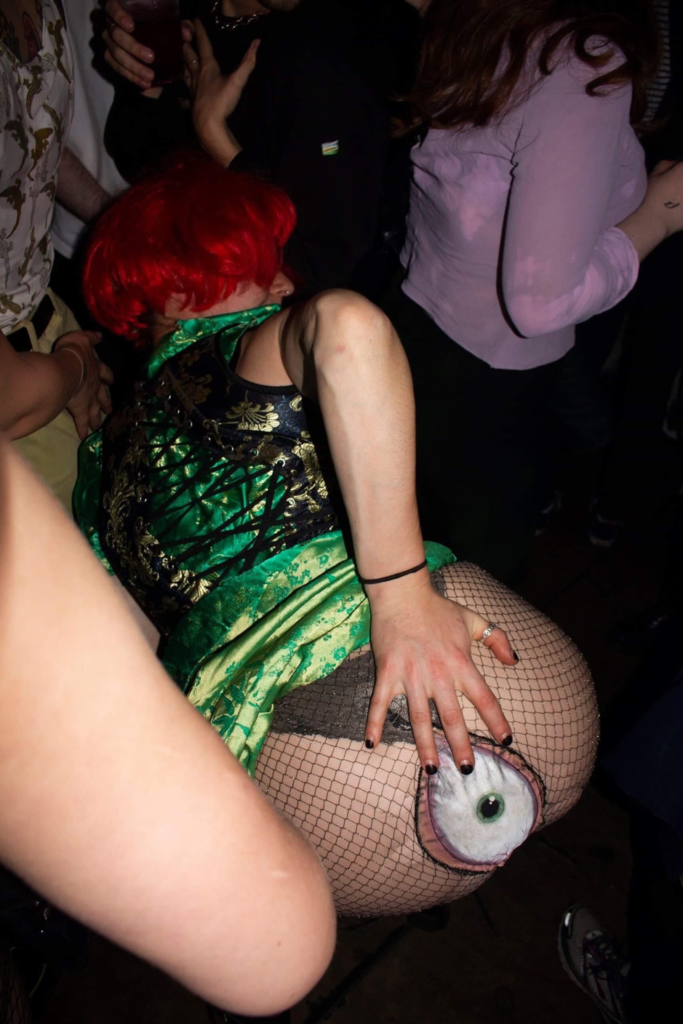[Written by Sofia Jade Lopes]
[Image Credits: Harry Anderson]
Glasgow is a city adorned in music and it’s no wonder that its nightlife scene is ranked among the best 10 in Europe. Spanning from Sauchiehall street’s famous commercial strip, LGBTQ+ clubs, to the world-renowned techno club Sub club, there is no excuse not to dance when the music calls in Glasgow. For many club-goers, the fun only lasts until 4am, when home awaits them. However, it’s during these wee hours of the morning that, deep within the underground Glasgow scene, the rave awakens. Beyond the pleasure of music, there is another unmissable joy of going out – that of self-expression through fashion. For many, a night out is an excuse to liberate themselves in every sense of the word, to present themselves freely, beyond the taxing inhibitions and expectations of the everyday.
The current after-hours aspect of Glaswegian nightlife was once best known as 90’s acid house; a name given to the rave scene that exploded in the UK three decades ago. This name for some lucky folks may bring to mind a summer of swirled memories in underground playgrounds, sweaty basements and warehouse parties, of pulsing beats and newly found tribes. For others this may only evoke a now retro, neon-based, psychedelic-inspired faux 90’s style. Most of all, the 90’s acid house culture may appear obsolete – a thing of the past – but truth be told, its prodigy still lives on in a way here in Glasgow.
In the early 90’s, police forces were assembled against the rave scene in the UK, succeeding in bringing the core of it down after relentless coverage and surveillance. At the time, these raves extended throughout Britain, but it was predominantly Londoners and Glaswegians, fuelled by self-expression, inclusion and hedonism, who sought out a rave culture that seemed to melt away the prevalent barriers within society while of course pressing on the authority’s buttons. This spiritual liberty was clearly translated through people’s style, as music has always been intimately related to fashion. Quite quickly into the 90’s acid house movement, a distinct yet frivolous style had defined its most loyal attendees, impacting clubbing-fashion history for decades to come.
This era brought about many of our now favourite crazy clothing basics such as bucket hats, oversized dungarees and convict-aesthetic bandanas which have travelled through time to our current commercial festival fashion. However, what remains characteristic of that era is the yellow smiley face, which represented the epitome of the acid house movement: happiness, joy and most of all euphoria. Originating from Danny Rampling’s revolutionary techno club Shoom in London, the psychedelically bright colours, tie-dye assortments, and ‘trip’ and ‘acid’ texts reinforced quite avidly that acid house was indeed not just a music genre. Thanks to this unprecedented experimentation with nocturnal fashion that the past 30 years have channelled us to now, we’re approaching a fashion, free to claim as our own. Although we presently do not have an established underground style per se, similarities can be drawn between 90’s acid house movement and Glasgow’s current creative culture.
For attendees of these after-hour parties, it was not just a statement of unconventional fashion, of rebellion, of a demand for deafening adrenaline and music; but of a sense of unity and intimacy that a combination of those common interests creates among the crowd. This evokes a feeling of limitlessness which then comes to life in the crowd’s style. Where previously, ravers had the freedom to dress frivolously, what we’re now seeing is that ravers have the freedom to dress whichever way makes them happy.
Of course, this idea is not exclusive to the underground scene, and is in fact emphasised by the likes of The Art School, as well as many other Glasgow clubs such as The Poetry Club, Room 2, Sub Club, Stereo, Broadcast, and many more. Usually, these club’s dance floors are demographically diverse and imbue this sense of belonging in everyone, simply through the euphoric vibes the music creates. Events such as the well-known LGBTQ+ night Shoot Your Shot, are imperative to the generation of inclusion and safe spaces for expression. Their techno nights are in collaboration with an array of local LGBTQ+ performers, bringing a whole new dimension to the scene.
In other words, progress starts on the dance floor. Glasgow’s nightlife is not one to be missed if you’re looking to feel euphoric, confident, unique and most of all a part of something special.






Love the writing! Amazing pics!❤️
Thank you!! <3